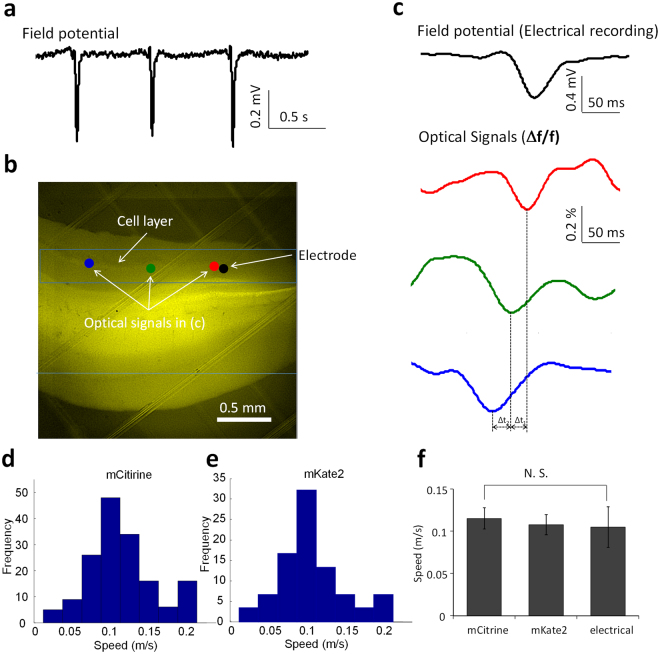Figure 1.
Optical recording characteristics of fast traveling spikes in VSFP butterfly 1.2 transgenic mice. (a) Epileptiform activity from local field potentials recording in the longitudinal hippocampal slice with the administration of 4-AP. (b) Fluorescent image of the VSFP butterfly 1.2 transgenic mice. (c) Electrical recording (local field potential) of the fast traveling spike from the black spot in (b) and optical signals (fluorescent intensity) change over time from 3 different regions of interest, red, green, and, blue spots in (b). (d) Histogram of propagating speed of the fast traveling spikes calculated from mCitrine optical signals. (e) Histogram of propagating speed of the f fast traveling spikes calculated from mKate2 optical signals. (f) Average speeds from mCitrine, mKate2 optical recording and the electrical recording. The speed is ~0.1 m/s and t-test shows that there is no significant difference between two different optical signals. N.S.: no significance.

